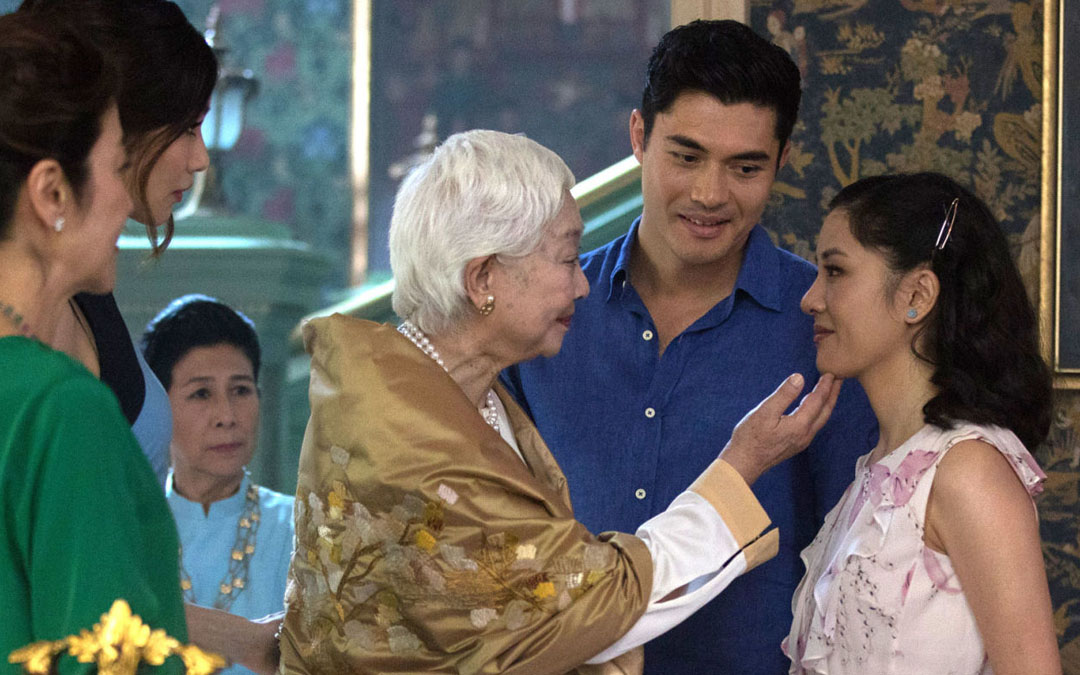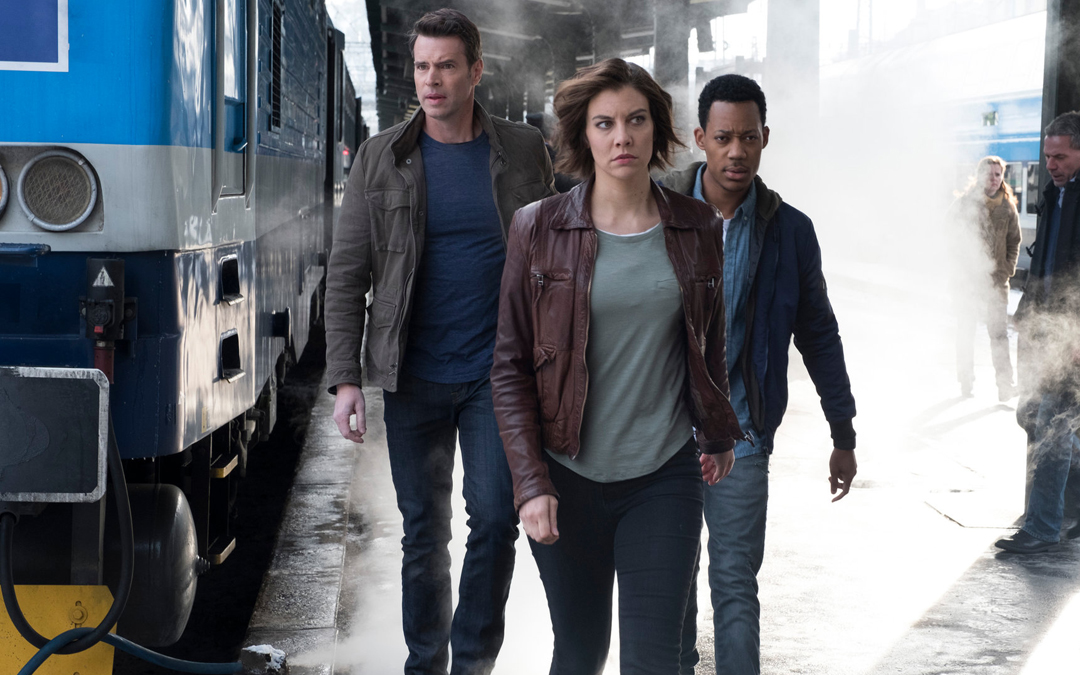All The Write Moves: 'Whiskey Cavalier'
March 4, 2019
Few hybrid genres are as appealing as the romantic comedy/thriller mashup because when this style of storytelling clicks, audiences get to savor the excitement of action sequences and the warmth of a love story, with jokes sprinkled into the mix for extra flavor. Alas, for every Mr. & Mrs. Smith (2005) there’s something like The Bounty Hunter (2010). If you remember that the former matched Brad Pitt with Angelina Jolie while the latter paired Jennifer Aniston and Gerard Butler, that’s the point. Done right, rom-com/thrillers are pure entertainment. Done wrong, they’re pure drivel.
The new ABC series Whiskey Cavalier — created by veteran sitcom scribe David Hemingson — falls somewhere in the middle, which seems appropriate given that the show is a mid-season replacement. Starring Scott Foley and Lauren Cohan, the show pairs a sensitive FBI agent with an emotionally blocked CIA operative. The central joke of the premise is a flip on traditional gender roles, because the hopeless romantic is male and the all-business badass is female. Given this reliance on the familiar opposites-attract formula, Whiskey Cavalier almost perfectly exemplifies the rom-com/thriller genre.
THE BEAT-CUTE
In romantic comedies, one crucial early moment is the meet-cute, during which an adorable woman accidentally bumps into a hunk, or vice versa. Per the rom-com formula, they either immediately spark with each other and then run into problems with family and friends once they start dating, or they immediately hate each other, not realizing that their animosity is misdirected affection. Whatever the particulars, you get the idea. They meet. It’s cute.
The corresponding moment in a rom-com/thriller adds violence to the mix. In Whiskey Cavalier, FBI agent Will Chase (Foley) heads to a stakeout in a bar, where he’s tasked with capturing a fugitive hacker. While Will awaits the hacker’s arrival, he gets distracted by Francesca “Frankie” Trowbridge (Cohan), who sits next to him and makes small talk. Will and Frankie seem to connect immediately, but once the hacker arrives, Frankie throws an explosive that creates a distraction, pulls a gun, and reveals that she’s handcuffed Will to the bar. She just played Will by detecting and exploiting his sensitivity.
The meet-cute continues evolving into a “beat-cute” when Will and Frankie engage in a wild car chase before having a nasty martial arts brawl with each other. This whole sequence is the rom-com/thriller equivalent of conventional romantic comedy scenes in which will-they-or-won’t-they characters trade insults. More importantly, these violent exchanges in Whiskey Cavalier serve narrative purposes beyond establishing veiled attraction. Each time Will bitches about CIA methodology or Frankie gripes about FBI methodology, Hemingson underscores the underlying opposites-attract principle. After all, if the characters didn’t find each other interesting, they wouldn’t waste energy quarreling.
Takeaway: Animosity helps dramatize will-they-or-won’t-they tension.
IN A WORLD . . .
A common complaint about contemporary movie trailers is that some give away entire plots. Why see a movie if you’ve already hit all the highlights in a three-minute ad? But think about the implications of that complaint; it is possible to sketch an entire cinema narrative in three minutes. Veteran movie and TV writers understand what trailer cutters understand. If you’re clever and evocative and fast, you can imply what you don’t overtly state, thereby covering a whole lot of narrative real estate in a very small amount of screen time.
The teaser of Whiskey Cavalier demonstrates how this works. In the space of just a few minutes, Hemingson conveys the following beats, and more: 1) Will wallows in pain after a breakup, listening to sad music and drinking himself stupid. 2) Will is such a stone-cold professional that when he gets called in for work, he sobers up immediately, throws on his FBI bulletproof vest, and grabs his machine gun. 3) Will’s best friend, Ray, is also his partner. 4) When Ray is late for their rendezvous with a man selling biological weapons, Will improvises in order to contain the dangerous situation. 5) When that doesn’t work, Will switches to James Bond mode, embarking on a foot chase and a shootout. 6) Because of his recent breakup, Will is easily distracted by anything romantic, so when he looks away from a villain to observe a marriage proposal, he gets shot — through the heart.
Naturally, Will survives to fight again in Act One (thanks to that bulletproof vest). What matters is how much story Hemingson crams into the teaser. Like a trailer, the teaser contains a movie’s worth of narrative, reduced to basic elements. Each line is surgical, each location is introduced and dispatched quickly, and each unit of action serves a distinct purpose. The storytelling slows down in Act One because viewers need to learn more about Will and the other major characters in order to care about what’s happening, but the adrenalized teaser gives a taste of every crowd-pleasing element the show offers.
Takeaway: Embrace time constraints as challenges, not obstacles.
LET’S TWIST AGAIN
Thrillers thrive on twists, and rom-com/thrillers are no exception. The main twist of the Whiskey Cavalier pilot won’t be spoiled here, but some cryptic remarks will suggest why the twist makes for an effective storytelling strategy. Early in the episode, we learn about a traumatic event that a major character recently experienced, and the way we learn about this event causes us to make an assumption. Then Hemingson deliberately nudges this plot thread to the background, allowing us to compartmentalize the traumatic event as a thing that happened in the past. In the climax of the episode, Hemingson reintroduces the plot thread by way of a twist that changes major character dynamics. Just moments later, Hemingson unleashes a second big twist.
The first twist, the one relating to the traumatic event, works because Hemingson steered us toward the aforementioned assumption. We, the viewers, don’t get ahead of that particular narrative element because we don’t have reason to believe it will recur. This also has the effect of setting the stage for the second big twist. Once Hemingson shakes our understanding of the show’s universe with the first twist, we presume he’s played his ace card. This sleight-of-hand trick prevents us from anticipating the second big twist.
Even without the specifics, the lessons of these maneuvers should be clear. Some twists work because they sit comfortably with what came before, even if we didn’t realize that the foundation for a future twist was being built. Out-of-nowhere twists, on the other hand, sometimes work because a preceding twist causes us to believe no more surprises are impending. Both approaches suit the rom-com/thriller genre, because they undercut the overall predictability of romantic comedy structure with the jolts that make thrillers enjoyable.
Takeaway: Distraction keeps viewers from guessing your secrets.
Written by: Peter Hanson
Peter Hanson is a Los Angeles-based writer, filmmaker and teacher. He directed the screenwriting documentary Tales from the Script, and he teaches at Pepperdine University and UCLA Extension. He provides script consulting at www.GrandRiverFilms.com.- Topics:
- Discussing TV & Film




